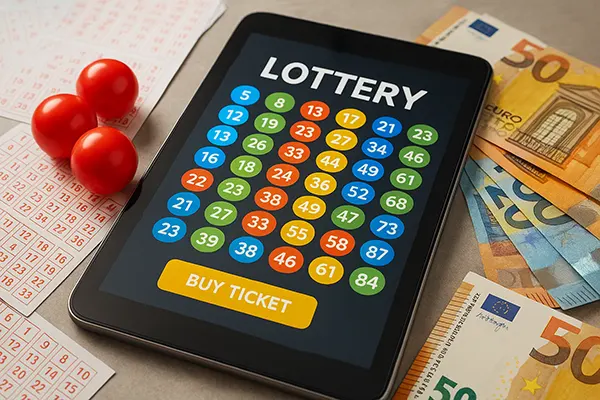State vs Private Lotteries: What Changed in 2025?

The lottery landscape has undergone significant transformation in 2025, particularly in the delicate balance between state-run and privately operated systems. This year marked a pivotal shift, with new legislative moves, economic adjustments, and technological innovations altering how lotteries operate across different countries. Players, regulators, and operators are all navigating a renewed set of opportunities and challenges.
Regulatory Shifts Reshaping the Lottery Industry
Throughout 2025, several European nations have updated their lottery regulations to adapt to modern gambling trends. In countries like France and Italy, governments expanded licensing frameworks to allow more private operators to enter the market. The goal behind this move is twofold: to stimulate economic competition and to reduce the black-market influence of unregulated online lotteries. While state monopolies previously dominated the sector, these legal changes now encourage a more diverse operator base under strict compliance conditions.
In contrast, some countries, such as Germany, have opted to reinforce their state-run models by introducing digital enhancements and broader social responsibility measures. Their strategy focuses on protecting players from gambling harm while preserving lottery revenues for public welfare initiatives. These developments have led to more transparent and accessible systems, with enhanced ID verification and spending limits introduced via secure mobile platforms.
The United Kingdom, in particular, has seen a hybrid evolution. The UK Gambling Commission tightened rules for both public and private lottery providers, including new affordability checks and advertising restrictions. As a result, private firms must now match the public sector’s accountability standards, or risk licence suspension. This regulatory harmonisation aims to ensure player protection regardless of who operates the lottery.
Legislative Impacts on Market Dynamics
Legal reforms have directly impacted the commercial viability of private lottery operators. With clear rules now in place, private firms are more confident to invest in technology and marketing strategies. This has led to a spike in app-based lottery platforms, especially among younger demographics seeking convenience and personalisation. However, compliance costs have risen sharply due to mandatory audits and licensing fees.
State lotteries, on the other hand, have maintained their dominance by integrating omnichannel strategies. By combining physical ticket sales with app-based platforms, national lotteries in countries like Spain and Sweden have preserved their market share. They also leverage long-standing trust from players, which remains a key advantage in attracting risk-averse participants.
Despite growing competition, the coexistence of both public and private models has introduced healthy dynamics. Innovation is now seen as essential, not optional, pushing all operators to modernise their offerings while respecting consumer protection laws. The result is a more robust and transparent ecosystem, with enhanced monitoring tools and increased player choice.
Economic Implications for Players and Operators
From an economic standpoint, 2025 has been marked by shifting taxation policies on lottery winnings. In Denmark and Finland, for example, governments introduced tax-free incentives for winnings below certain thresholds, mainly to stimulate participation in licensed lottery products. This move was aimed at countering the appeal of offshore lotteries, which often avoid national taxation entirely.
Operators have had to recalibrate their revenue models in response. State lotteries, often bound by rigid structures, have adapted by launching limited-time games with larger jackpots and innovative draw formats. These include instant draws and multi-country pooled jackpots, which generate excitement without undermining public funding objectives.
Private operators, meanwhile, focus on engagement and loyalty systems. Through gamified user experiences and cashback-style reward schemes, they aim to secure long-term player commitment. Their agility allows for rapid changes in odds and prize structures, but they must tread carefully to maintain responsible gambling standards and avoid breaching regulatory caps on player incentives.
Player Spending Trends and Behavioural Changes
Consumer behaviour has notably shifted in 2025, with players becoming more data-conscious and value-oriented. Transparent odds, fair play assurances, and secure payment channels are now central to customer decision-making. This shift has favoured operators who prioritise education and risk-awareness tools within their platforms.
There is also an emerging trend of micro-betting in lotteries, where players engage in smaller, frequent stakes rather than large-ticket purchases. This model has seen particular traction in Eastern Europe, where mobile usage is high but disposable income remains comparatively low. As a result, operators catering to this segment are expanding their reach across demographics.
Players increasingly view lotteries not solely as a chance to win large sums, but also as a form of social interaction. Community draws, charity-linked tickets, and shared syndicates have gained popularity. This shift towards collective participation enhances trust in the system and supports long-term engagement strategies for both state and private providers.

Technology and Transparency in 2025 Lotteries
One of the defining features of 2025’s lottery evolution has been the integration of blockchain and AI into operational systems. These technologies ensure greater transparency in draw outcomes, player verification, and fund allocation. Estonia and the Netherlands are leading in blockchain adoption for real-time result verification and fraud prevention mechanisms.
AI is also being deployed for personalised recommendations and risk analysis. Lottery apps now track player behaviour to identify early signs of problematic play, issuing automated alerts or temporary play limits. This real-time monitoring enhances compliance with responsible gambling mandates and provides players with greater control over their activity.
Moreover, biometric authentication – especially via facial recognition and fingerprint login – has become standard for mobile lottery access. These measures significantly reduce identity fraud and underage gambling, improving trust and security for all stakeholders. Combined with AI and blockchain, the lottery sector is experiencing a technological revolution aimed at sustainability and fairness.
Future Trends in Lottery Tech
Looking ahead, cross-border lottery pools are expected to grow, especially among EU countries exploring regulatory interoperability. The concept of a “European Lottery Alliance” has gained traction, with discussions underway to pilot shared prize pools, standardised age checks, and real-time tax reporting across jurisdictions.
AR (augmented reality) elements are also being tested to enhance retail lottery experiences. Pilot schemes in Austria and Belgium allow players to scan tickets for immersive prize animations or location-based mini-games. This gamification trend adds a layer of entertainment beyond the traditional draw format, attracting tech-savvy consumers.
Finally, sustainability is becoming a core concern. Both public and private operators are under pressure to reduce paper waste and adopt digital-only tickets. In response, mobile-first platforms are now promoting eco-lottery initiatives, pledging to donate portions of proceeds to environmental causes and highlighting carbon-neutral operations. These commitments not only reflect social values but also help secure a loyal and responsible user base.
